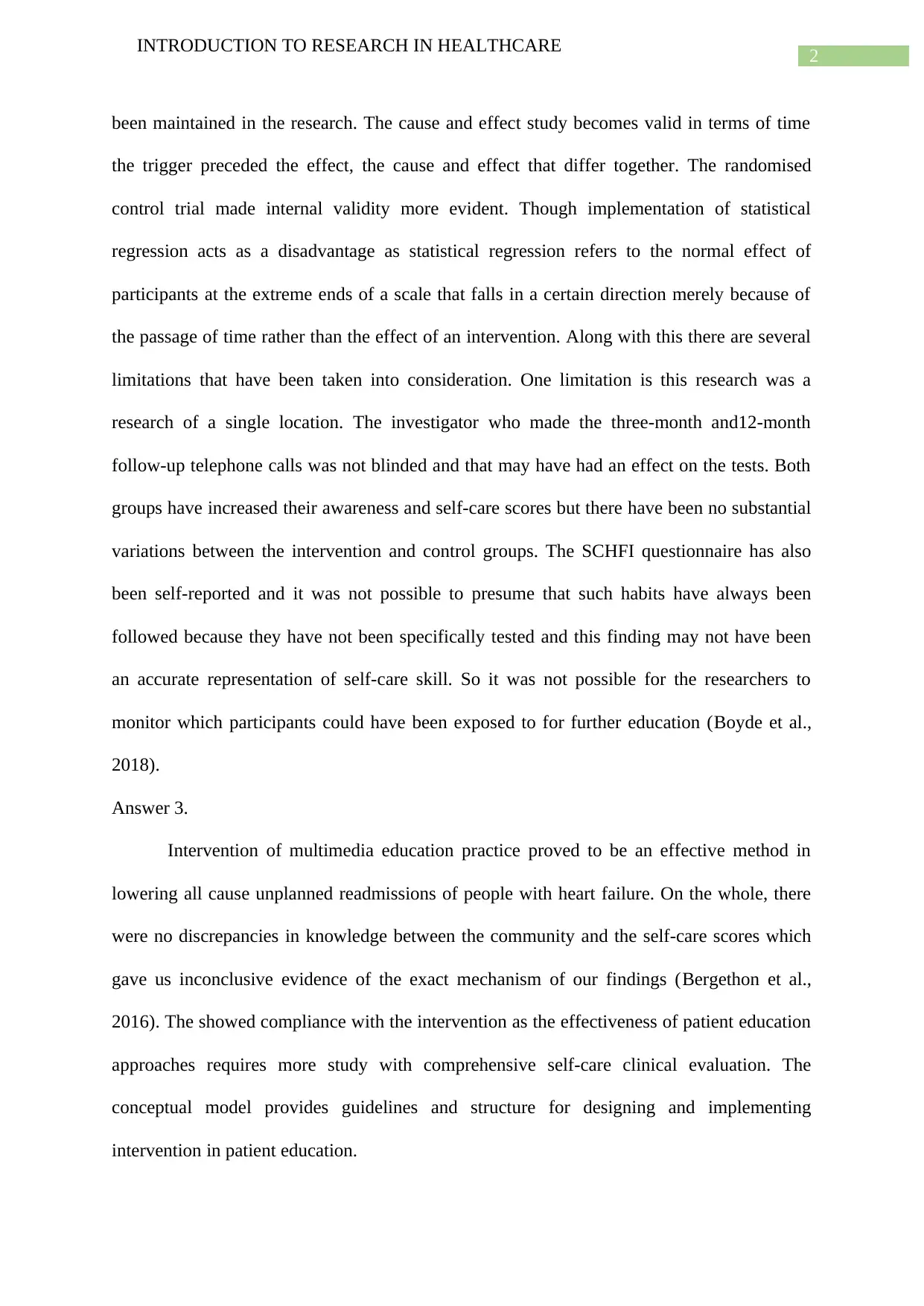University Healthcare Research Study: Analysis and Evaluation
VerifiedAdded on 2022/08/26
|4
|986
|17
Homework Assignment
AI Summary
This assignment analyzes a research study focused on a multimedia educational intervention designed to reduce unplanned hospital readmissions for heart failure patients. The study's rigor is evaluated through the lens of consistency in the study process, including the development of the research team, data collection guidelines, and ensuring data saturation. The assignment delves into the internal validity of the study, discussing how well the research rules out alternative explanations for its findings and the impact of the intervention. Limitations, such as the single-location study design and potential biases, are also discussed. Furthermore, the analysis examines the compliance and adherence to the intervention, highlighting the effectiveness of patient education approaches. The study indicates that multimedia education can be effective in reducing readmissions, but further research is needed to understand the mechanisms behind the findings and to improve self-care education in clinical evaluations. The assignment also addresses the study design, data collection methods, and the potential for bias in the research.
1 out of 4











![[object Object]](/_next/static/media/star-bottom.7253800d.svg)